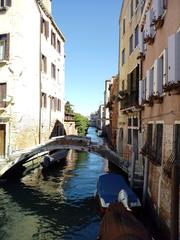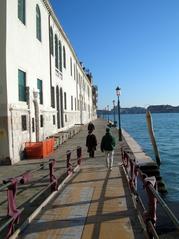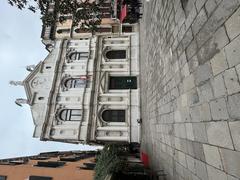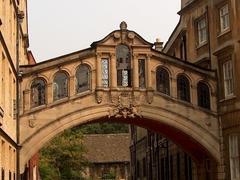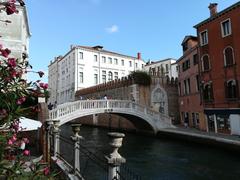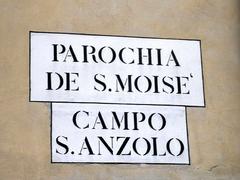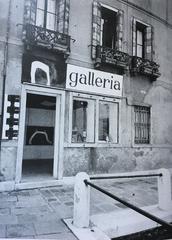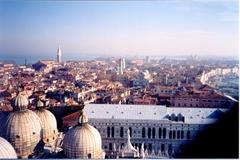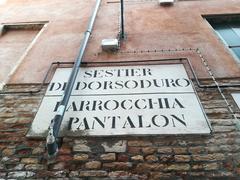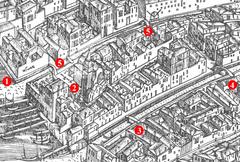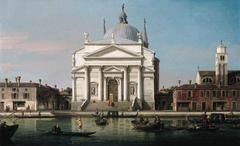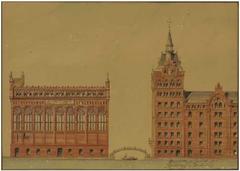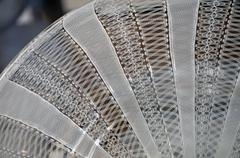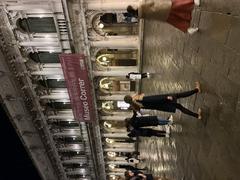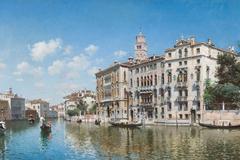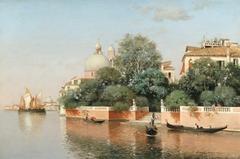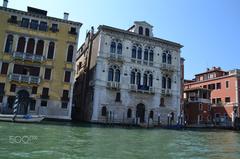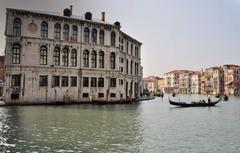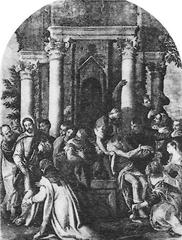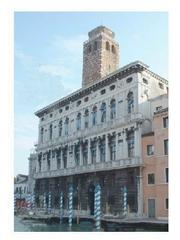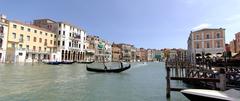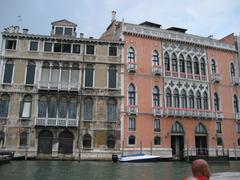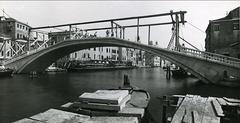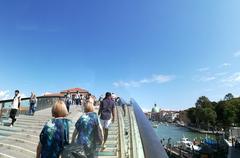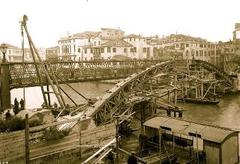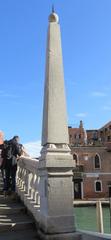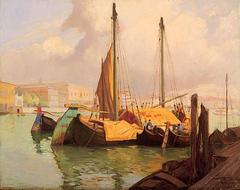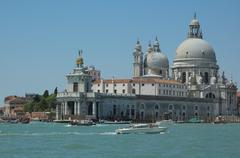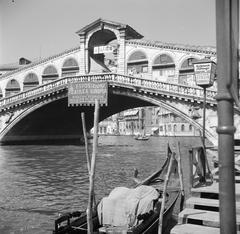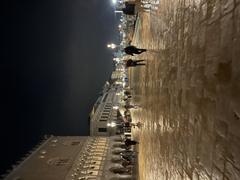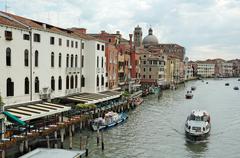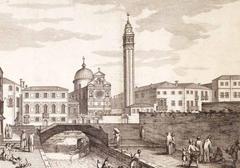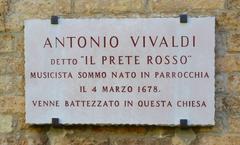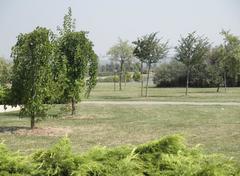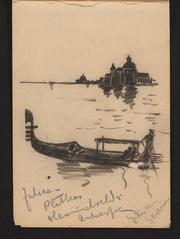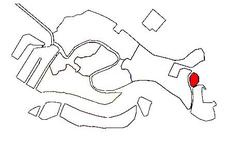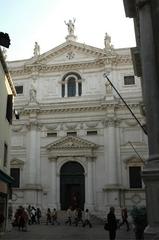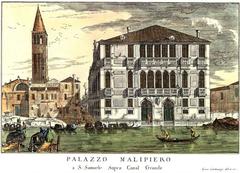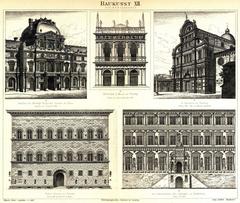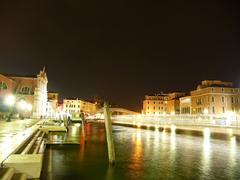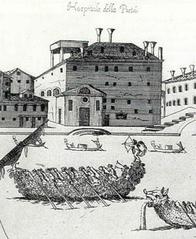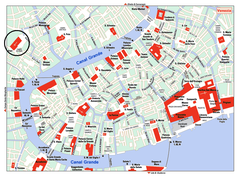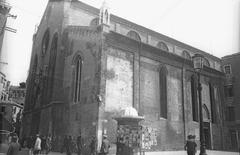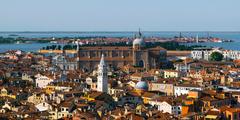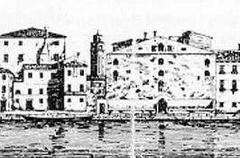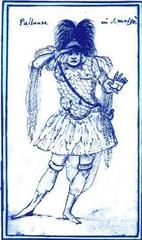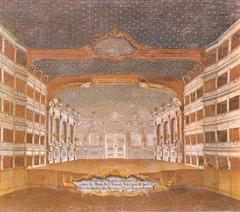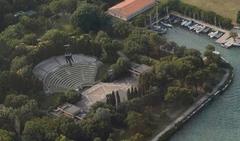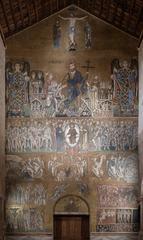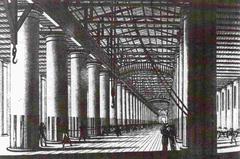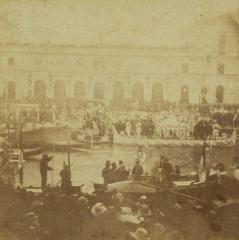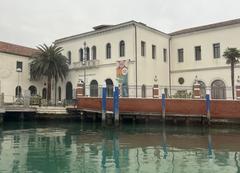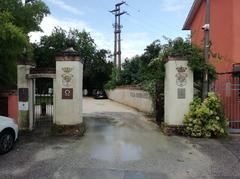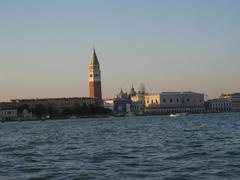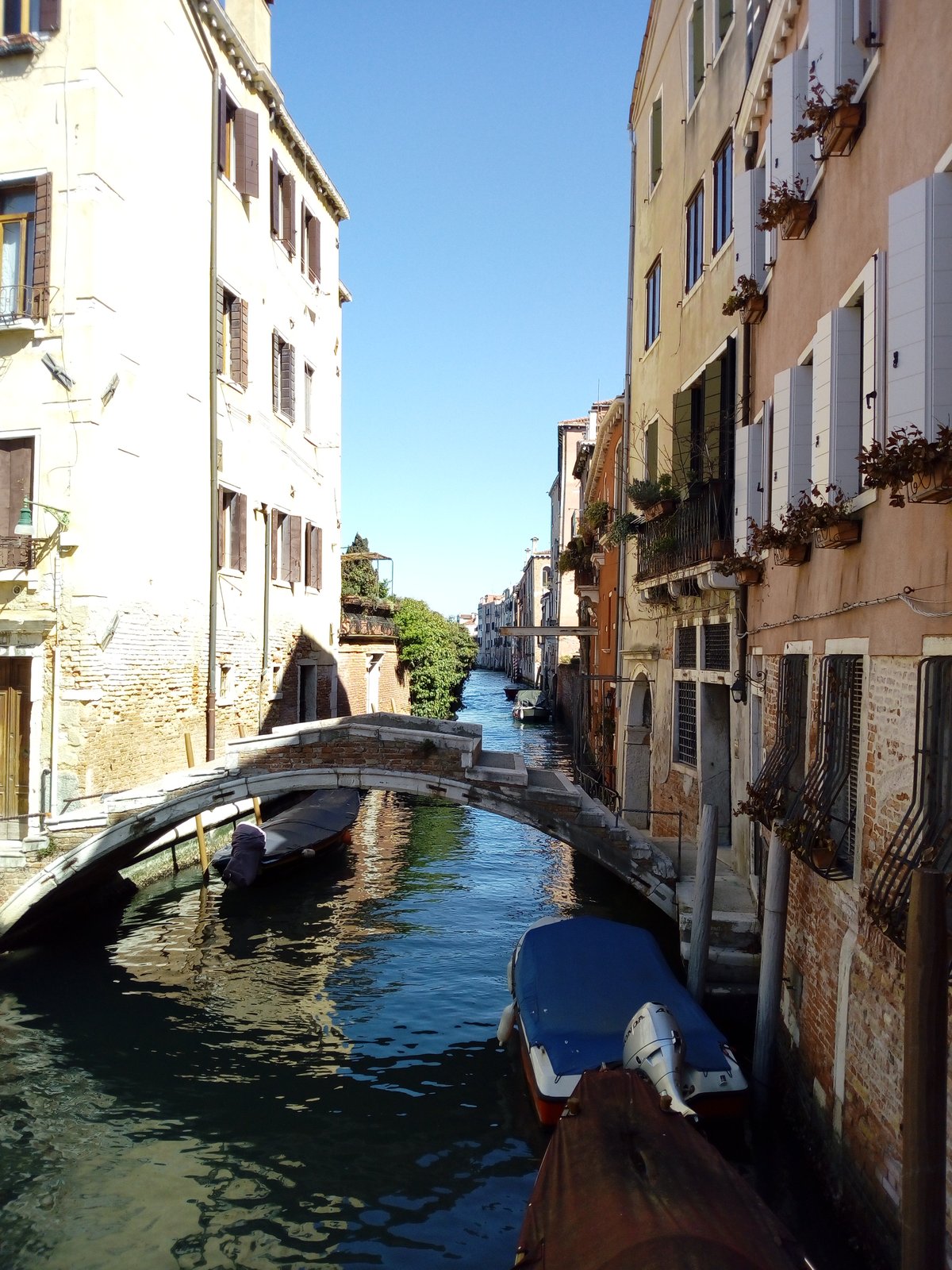
Comprehensive Guide to Visiting Ponte Chiodo, Venice, Italy
Date: 19/07/2024
Introduction
Ponte Chiodo, nestled in the Cannaregio district of Venice, Italy, is a captivating relic of the city’s rich medieval history. This unique bridge, dating back to the 15th century, is renowned for its distinctive design that lacks parapets, offering visitors an unobstructed and somewhat daring crossing experience. The name ‘Chiodo,’ translating to ‘nail’ in Italian, is thought to reference either the nails used in its construction or a prominent local family associated with the bridge (Exploring Ponte Chiodo - Venice’s Historic Bridge Without Railings).
The construction of Ponte Chiodo occurred during a vibrant era in Venetian history when the city was a powerful maritime republic. This period was marked by significant urban development and architectural innovation, with the bridge serving as a practical crossing point over the Rio di San Felice and a symbol of the city’s prosperity and the influence of its noble families (Visiting Ponte Chiodo - History, Tips, and Nearby Attractions in Venice).
Architecturally, Ponte Chiodo stands out as one of the few remaining bridges in Venice without railings, a common design choice in the medieval period that has largely disappeared due to safety concerns and modernization. Constructed from durable Istrian stone, the bridge is a testament to the practical and aesthetic considerations of its time, emphasizing functionality and simplicity (Exploring Ponte Chiodo - History, Significance, and Visitor Information).
Today, Ponte Chiodo not only serves as a historical monument but also as a cultural icon within the Cannaregio community. It is a popular subject for photographers and tourists who seek to explore the lesser-known aspects of Venice’s architectural heritage. The bridge’s preservation efforts underscore the city’s commitment to maintaining its rich cultural legacy, despite the ongoing challenges posed by flooding and tourism (Venice in Peril Fund).
Table of Contents
- [Exploring Ponte Chiodo - History, Significance, and Visitor Information](#exploring-ponte-chiodo---history-significance-and-visitor-informationexploring-ponte-chiodo---history-significance-and-visitor-information)
- [History of Ponte Chiodo](#history-of-ponte-chiodohistory-of-ponte-chiodo)
- [Origins and Construction](#origins-and-constructionorigins-and-construction)
- [Architectural Significance](#architectural-significancearchitectural-significance)
- [Historical Context](#historical-contexthistorical-context)
- [Preservation and Restoration](#preservation-and-restorationpreservation-and-restoration)
- [Cultural Impact](#cultural-impactcultural-impact)
- [Modern-Day Relevance](#modern-day-relevancemodern-day-relevance)
- [Visitor Information](#visitor-informationvisitor-information)
- [Visiting Hours and Tickets](#visiting-hours-and-ticketsvisiting-hours-and-tickets)
- [Accessibility](#accessibilityaccessibility)
- [Nearby Attractions](#nearby-attractionsnearby-attractions)
- [Travel Tips and Logistics](#travel-tips-and-logisticstravel-tips-and-logistics)
- [Getting There](#getting-theregetting-there)
- [Best Time to Visit](#best-time-to-visitbest-time-to-visit)
- [FAQs](#faqsfaqs)
- [Conclusion](#conclusionconclusion)
- [History of Ponte Chiodo](#history-of-ponte-chiodohistory-of-ponte-chiodo)
- [References](#referencesreferences)
Exploring Ponte Chiodo - History, Significance, and Visitor Information
History of Ponte Chiodo
Origins and Construction
Ponte Chiodo, one of Venice’s most unique and historically significant bridges, dates back to the 15th century. This bridge is located in the Cannaregio district, one of the six historic sestieri of Venice. The name “Chiodo” translates to “nail” in Italian, which is believed to be derived from the Chiodo family, a prominent Venetian family who owned the land around the bridge during its construction.
Architectural Significance
Ponte Chiodo is one of the few remaining examples of a bridge without parapets in Venice. This architectural style was common in the medieval period but has largely disappeared due to safety concerns and modernization. The absence of railings gives the bridge a distinctive and somewhat precarious appearance, offering a glimpse into Venice’s architectural past. The bridge’s design reflects the practical and aesthetic considerations of the time, emphasizing functionality and simplicity.
Historical Context
During the 15th century, Venice was a thriving maritime republic, known for its trade and cultural exchanges. The construction of Ponte Chiodo occurred during a period of significant urban development and architectural innovation in Venice. The bridge served not only as a practical crossing point over the Rio di San Felice but also as a symbol of the city’s prosperity and the influence of its noble families.
Preservation and Restoration
Over the centuries, Ponte Chiodo has undergone various preservation efforts to maintain its structural integrity and historical authenticity. Unlike many other Venetian bridges that have been modified or rebuilt, Ponte Chiodo has retained much of its original design. Preservationists have focused on using traditional materials and techniques to ensure that the bridge remains a true representation of its time.
Cultural Impact
Ponte Chiodo holds a special place in Venetian culture and history. It is often featured in local folklore and has inspired numerous artists and writers. The bridge’s unique design and historical significance make it a popular subject for photographers and tourists alike. Its preservation is a testament to Venice’s commitment to maintaining its rich cultural heritage.
Modern-Day Relevance
Today, Ponte Chiodo is one of the few remaining bridges in Venice that offers a direct connection to the city’s medieval past. It stands as a reminder of the architectural and cultural evolution of Venice over the centuries. The bridge continues to attract visitors who are interested in exploring the lesser-known aspects of Venice’s history and architecture.
Visitor Information
Visiting Hours and Tickets
Ponte Chiodo is accessible 24/7 as it is an open public bridge. There is no entrance fee required to visit Ponte Chiodo, making it an easily accessible historical site for all visitors.
Accessibility
Due to its unique design without parapets, visitors are advised to exercise caution while crossing. The bridge is located in the quieter Cannaregio district, providing a more relaxed experience away from crowded tourist areas.
Nearby Attractions
Ponte Chiodo is close to several historical sites in the Cannaregio district. Nearby attractions include:
- Church of Madonna dell’Orto - Known for its stunning Gothic architecture and artworks by Tintoretto (Church of Madonna dell’Orto).
- Jewish Ghetto - One of the oldest in the world, offering a deep dive into the history of Venice’s Jewish community (Jewish Ghetto).
Travel Tips and Logistics
Getting There
Ponte Chiodo can be reached by foot from various parts of Venice, including the Rialto Bridge and the train station. Visitors can also take a vaporetto (water bus) to the nearby Ca’ d’Oro stop and enjoy a short walk through the scenic Cannaregio district.
Best Time to Visit
The best times to visit Ponte Chiodo are early in the morning or late in the afternoon to avoid the peak tourist hours. Visitors can enjoy a peaceful walk and capture stunning photographs of the bridge and its surroundings.
FAQs
What are the visiting hours for Ponte Chiodo?
Ponte Chiodo is accessible 24/7.
Is there an entrance fee for Ponte Chiodo?
No, there is no entrance fee required to visit Ponte Chiodo.
How to get to Ponte Chiodo in Venice?
Ponte Chiodo is located in the Cannaregio district and can be reached by foot or by taking a vaporetto to the Ca’ d’Oro stop.
Conclusion
Ponte Chiodo is more than just a bridge; it is a living piece of Venice’s history. Its unique design, historical significance, and cultural impact make it a must-visit for anyone interested in the rich tapestry of Venice’s past. As one of the last remaining bridges without parapets, it offers a rare and valuable insight into the architectural practices and urban development of medieval Venice. Visitors are encouraged to download the mobile app Audiala for more information and updates on Venice’s historical sites.
References
- Exploring Ponte Chiodo - Venice’s Historic Bridge Without Railings, 2024, Venice in Peril (https://www.veniceinperil.org/)
- Visiting Ponte Chiodo - History, Tips, and Nearby Attractions in Venice, 2024, Save Venice Inc. (https://www.savevenice.org/)
- Exploring Ponte Chiodo - History, Significance, and Visitor Information, 2024, Chorus Venezia (https://www.chorusvenezia.org/en/madonna-dell-orto)
- Jewish Ghetto, 2024, Jewish Venice (https://www.ghetto.it/)
- Audiala, 2024, Audiala (https://www.audiala.com)
